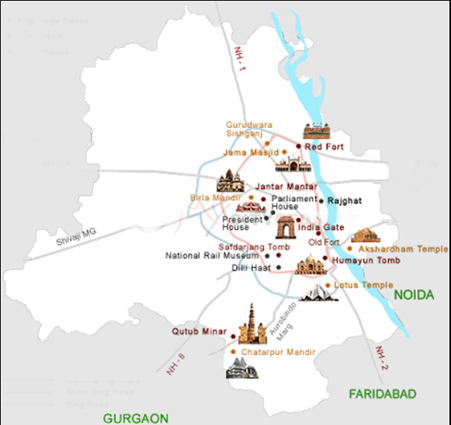


Humayun's tomb is believed to have been designed by the widow of the Mughal emperor Humayun.
The architectural plan of the monument, based on the description of Islamic paradise gardens, is
said to have inspired the Taj Mahal and many other Mughal tombs. The tomb is at the centre of a
square garden called Char Bagh.
The construction of the minar (tower) was begun in AD 1193 by Qutubuddin Aibak, the first Muslim
ruler of Delhi. It is 72.5 m high and stands at the courtyard of the Quwwat-ul-Islam masjid. This is
the oldest historical monument in Delhi and is a must-see for any visitor to the city.
It is the Bahá'i house of worship. A fairly recent construction, it is admired for its architecture.
A fascinating building built entirely of red sandstone, it is a fascinating example of the rich Mughal
architecture. Red Fort is the venue for India’s independence day parade.
Built by Shahjahan in AD 1650, it is the largest and the most well known mosque of India.


